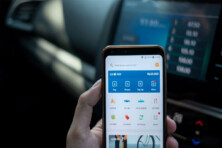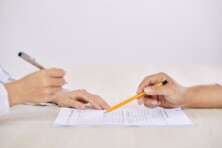Let’s define the major functions of the self-checkout machine
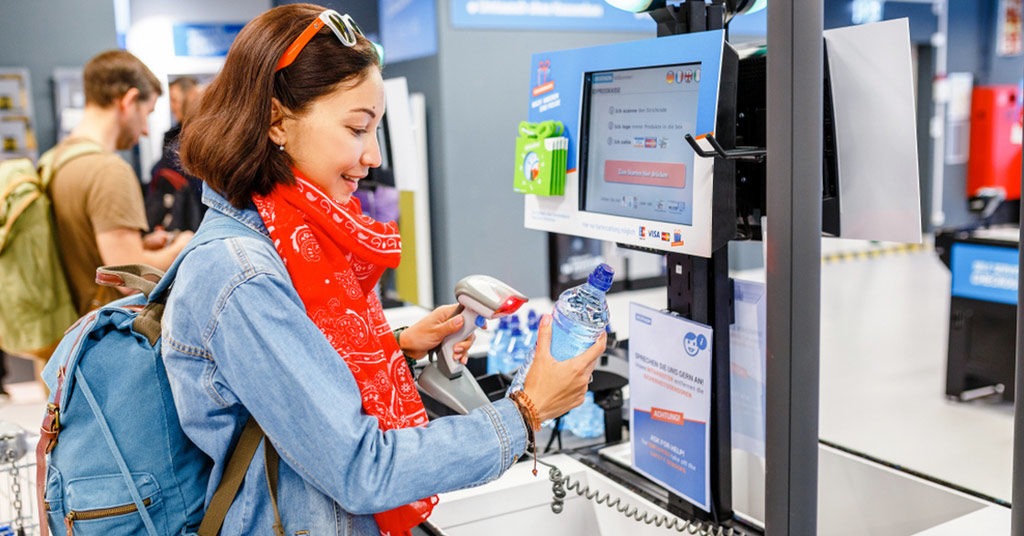
How does self-checkout work: functions & technology. Source: shutterstock.com
A self-service machine is not a new concept. However, nowadays we can see the dawn of the self-checkout era. Many stores from big supermarkets to small grocery stores are moving towards the use of such machines. Many shoppers say that a self-checkout machine is an apparatus with certain functional limitations. Nevertheless, the same functional limitations also apply to restrictions to what a user can and cannot do. Let’s define the major functions of the self-checkout machine: they are greeting, scanning, bagging, paying, and exiting.
Greeting
The first interaction between the self-checkout machine and the customer begins with greeting a prospective purchaser. There are different ways to implement this, but a touchscreen button is considered to be the most popular. Most modern self-service machines are multilingual (at least bilingual). Thus, a client who does not speak English is usually able to select their own language. Once a customer presses the button, a lovely (usually female) voice would tell them to scan the first item.
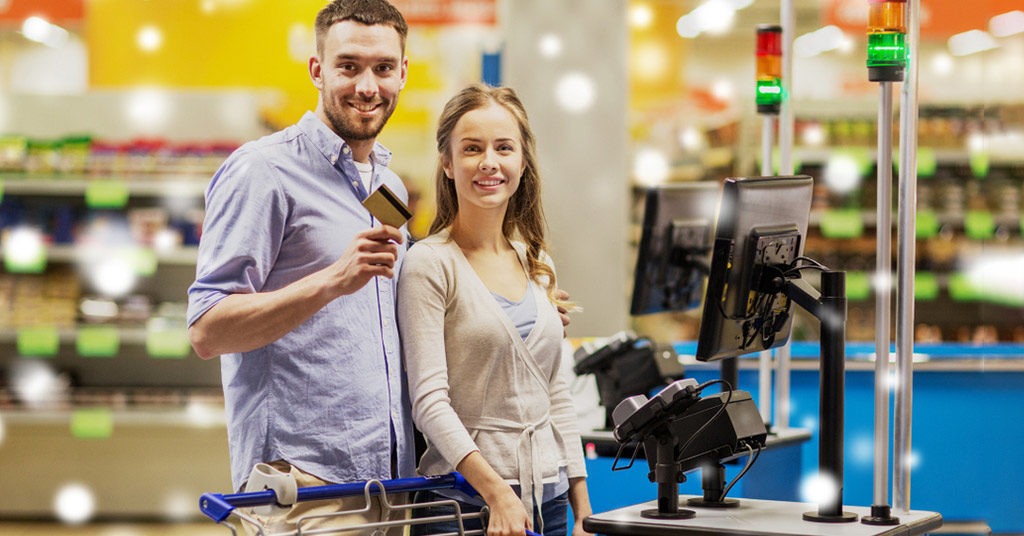
The first interaction between the self-checkout machine and the customer begins with greeting a prospective purchaser. Source: shutterstock.com
Scan and bag
A self-service machine performs most of the operations simultaneously. The principle of goods scanning is as follows: the customer scans the first item, after which they are asked to put the item in a bag. Every single item in the shop is linked to the machine system, so the data can be accessed by scanning the UPC on the item. The product code contains info about the product price, so the system knows how much money a customer has to pay for their purchase. Moreover, this code also contains information about the item’s weight. The automated cashier desk uses the info about the product’s weight in order to make measurements. That’s how the system knows whether a customer is attempting to deceive the store and steal something. When a buyer scans a product and doesn’t put it in the bag, the system would remind them to do so. In the case when a product’s weight (which is already in the bag) doesn’t match with the scanned one, the buyer will be informed of the error and will be asked to check the item’s weight or scan it one more time. Customer service personnel will also be alerted. Hence, a customer will receive a message about an error, not a hint about the possible fraud attempt.
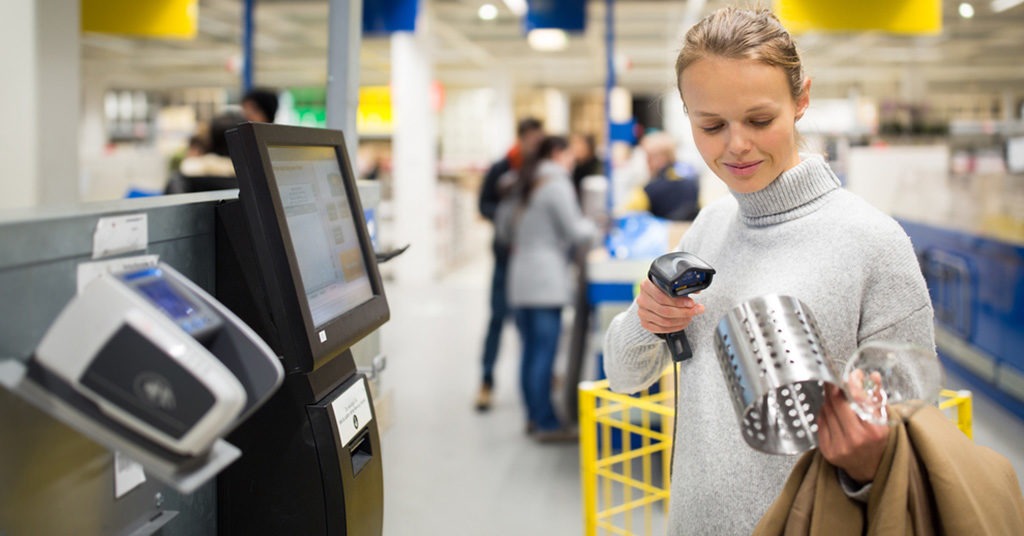
The product code contains info about the product price. Source: shutterstock.com
Some items, such as pastry, deli products, or fresh food, have no UPC. In that case, a self-checkout machine would request a purchaser to enter a code of the item manually.
Usually, at least one customer service worker supervises multiple self-checkout machines. Firstly, there is still a probability of error (system error, hardware problems, etc). Secondly, if a visitor intends to purchase alcoholic beverages or tobacco products, the system signals a store assistant to verify the buyer’s age, and consequently, confirm or deny restricted products purchasing.
Pay
When a buyer has scanned all the items they needed, they chooses the “pay” option. Normally, the first thing system will ask is the availability of special sales or discount coupons. Right after this, the system will ask the customer to select a payment method. However, this is possible only if the machine works with both banking cards and cash. Generally, there are two self-service machine types depending on payment systems: cashless machines and hybrid cash & cashless types. If an apparatus accepts cash, it has special mechanisms which take banknotes and coins and dispense change. Cashless transactions are quite simple and straightforward since they are not that different from the ones at conventional cashiers desks.
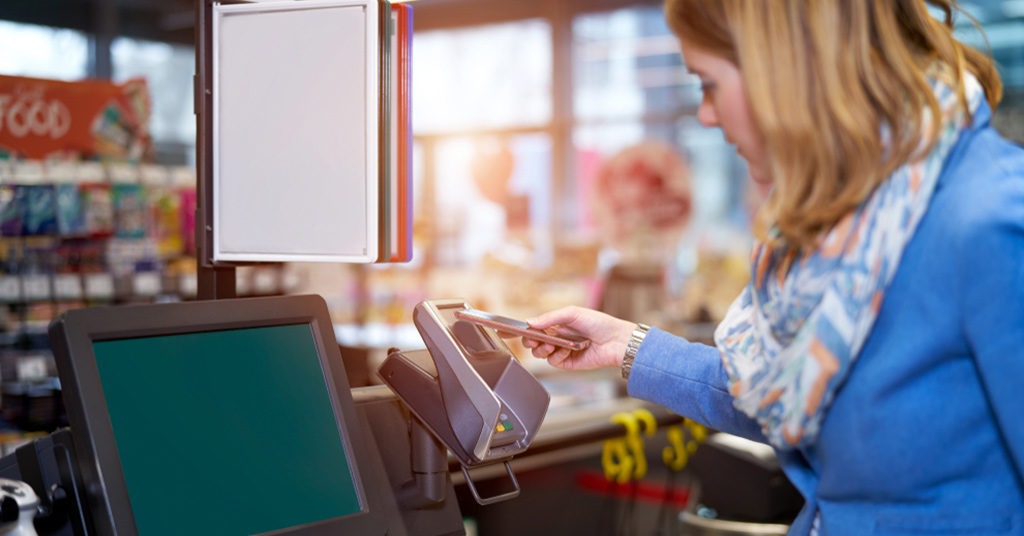
Cashless transactions are quite simple and straightforward. Source: shutterstock.com
Exit
A buyer can take their packages and bags only after the receipt has been printed. In most cases, still, the same lovely female voice will thank a buyer, and also invite them to shop there again.
SEE ALSO:


